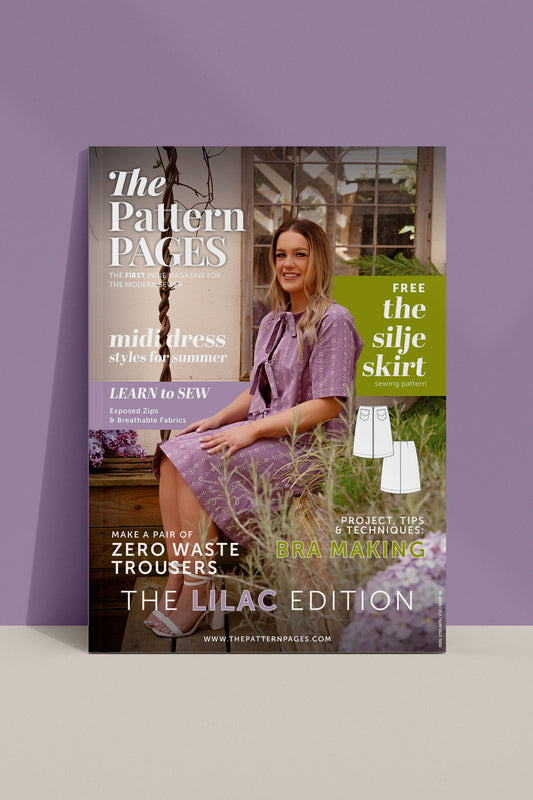
How to Make a Lining for a Skirt
Share
There are lots of great reasons for making a lining for a skirt, – it helps the skirt slide on smoothly over your legs, makes the insides look neat, adds durability and prolongs the life of the skirt since the fashion fabric isn’t touching your skin, helps stop the skirt from stretching and reduces wrinkling. But the best reason is that it gives a far superior finish for hardly any extra time and cost!
Skirt linings are generally ‘free-hanging’ linings meaning they’re attached to the skirt only at the waist and have a separate hem. This gives more movement to the lining. Since they’re not enclosed, the lining seams need to be neatened to stop fraying.
Here’s a quick show-and-tell video of how this type of skirt lining works:
To cut
Before a lining is sewn into the skirt, both are stitched separately and pressed.
The lining is cut the same as the skirt with just a few changes. You won’t need to make a separate lining pattern – you can cut it using the skirt pattern. Your skirt pattern might look like this:

Cut the length of the lining 2cm (¾in) shorter than the finished length of the skirt.
That extra 2cm (¾in) helps stop the lining peeking out when you sit down. You can just fold this up on the pattern.
The waist darts will become tucks so don’t mark the point of the darts – just the two notches at the top.
If the skirt has a back vent/kick pleat – cut this off when you cut the lining and put a notch at the top of the vent. The lining will have an opening in the seam up to the notch.
Remember to put the zip notch in, because you’ll need to leave that section of the seam open.
To save time you can slip the lining fabric under the skirt and cut them out together, then trim down the lining.

To sew

1. Sew the side seams, but make them slightly smaller than the skirt’s. For example, if the skirt’s side seams are 1.5cm (⅝in) make the lining’s side seams 1cm – 1.2cm (½in – ⅜in). This will make the waist bigger, but just make the waist tuck deeper to compensate. It’s okay, even desirable if the lining is a little bigger than the skirt, but it’s not okay if it’s smaller!
The seams of a skirt’s lining are closed seams wherever possible – in other words, they’re pressed to one side rather than pressed open. A closed seam in thin lining fabric creates hardly any bulk and is very neat.
2. Sew the back seam, leaving a gap for the zip and a gap for the vent. Press this seam open.
3. Form tucks at the top instead of darts.
4. Press the lining and the skirt. Put the lining inside the skirt; the wrong sides sit together. Match them at the waist and apply the waistband.
5. Hand-sew the lining in place around the edges of the zip. A faster (but not as neat) alternative is to just hem the edges of the gap by machine – the lining will hang free around the zip, but you’ll have to be very careful not to catch your foot on it when getting dressed.
6. Hem the lining. Stitch around the edges of the opening in the seam for the vent.

Pencil, A-line and flared skirt linings are all cut and sewn the same way, but if the skirt is very flared the lining is cut a little less flared. Just fold the excess flare in on the sides of the pattern.
Problem-solving
What if the skirt has seams or pockets?
You won’t need seams or pockets in the lining! Pin the skirt pattern pieces together to create a whole front or back and then cut the lining using that.
What if the skirt is cut on the bias?
Cut the lining on the bias too.
What if the top of the skirt is faced?
The lining needs to be attached to the lower edge of the facing, which requires an extra step in the patternmaking stage.
Here’s a video describing how to do this, with an easier option you may prefer:
Author: Liz Haywood
IG: @lizhaywood3754




